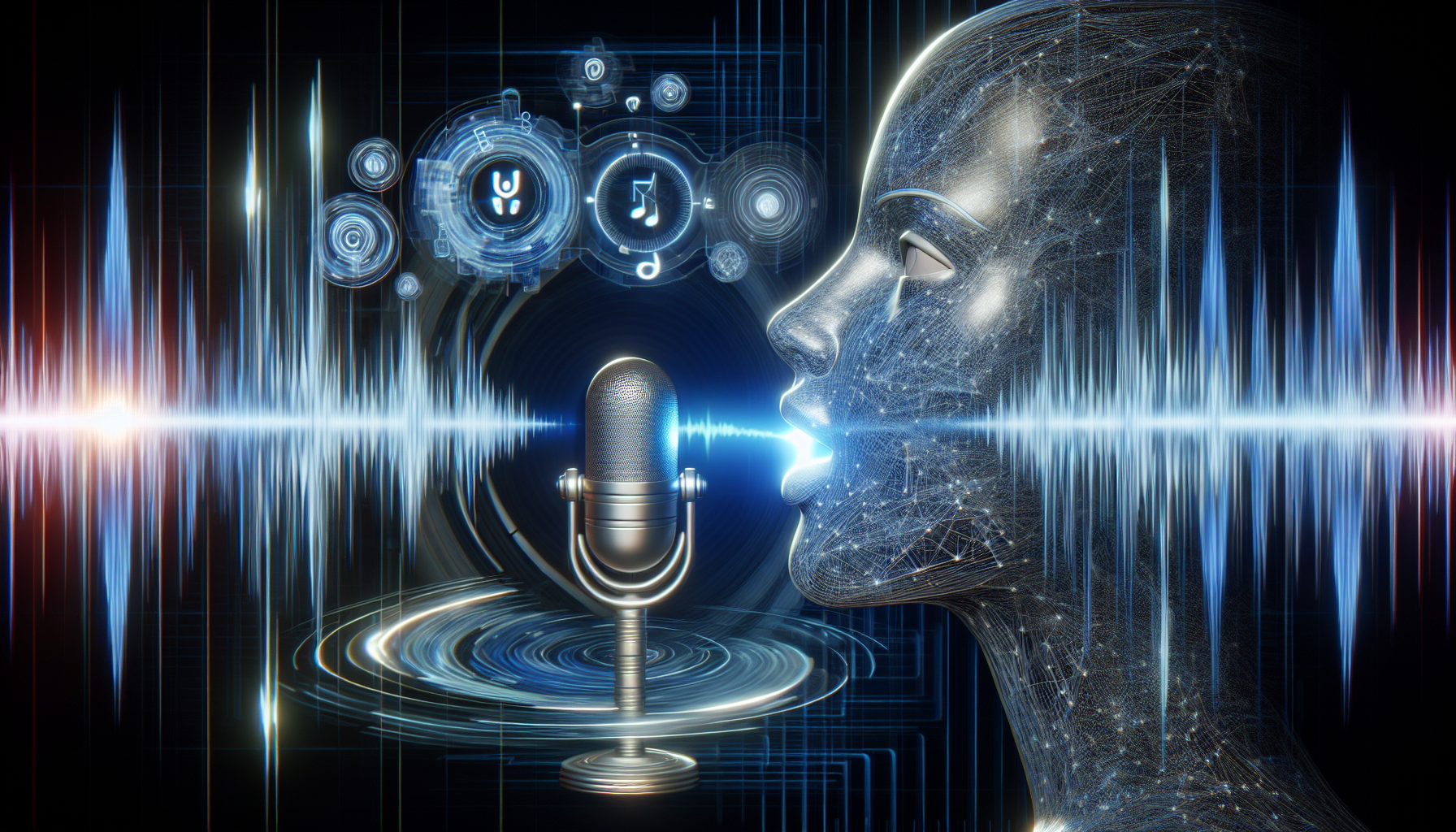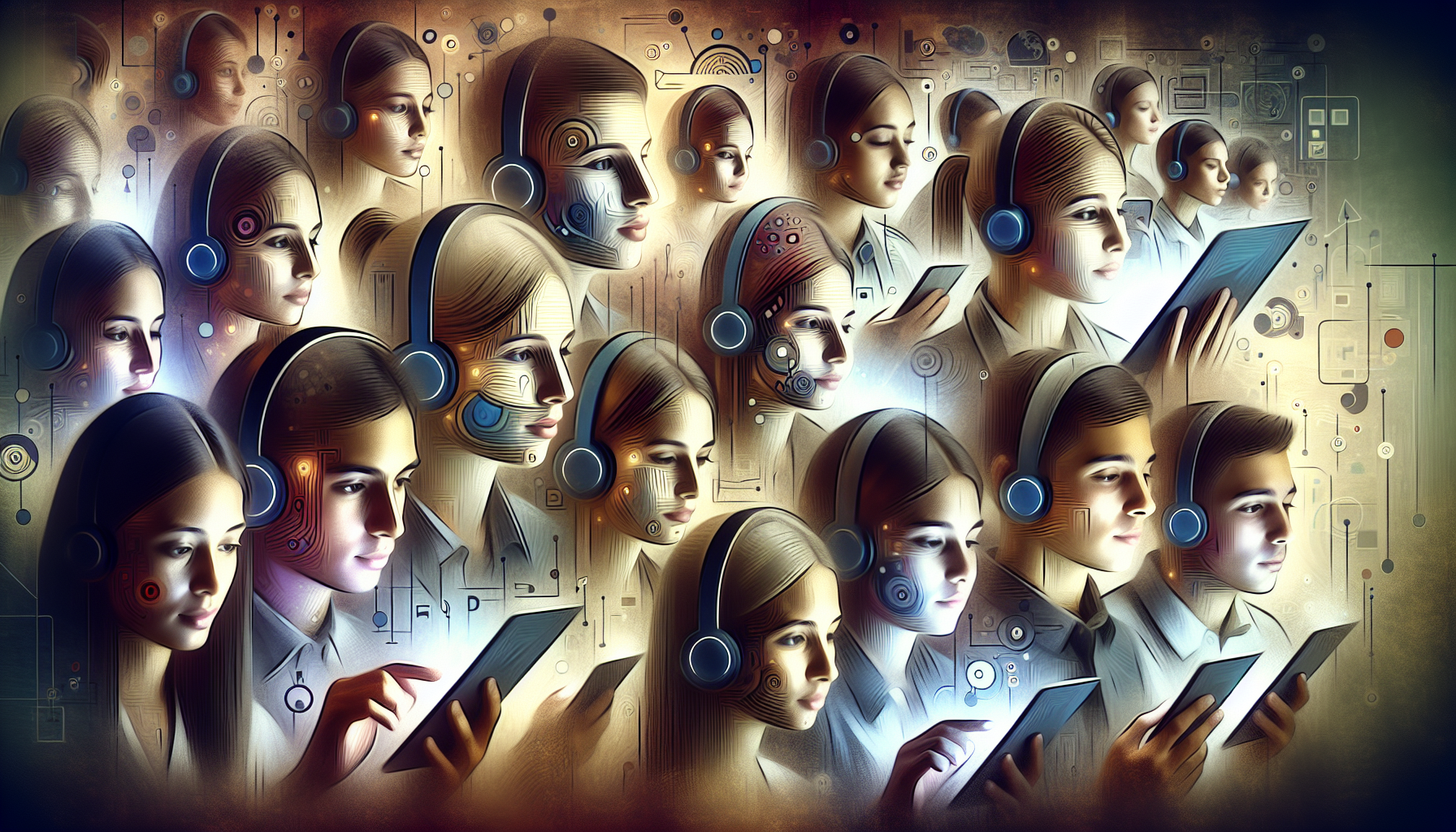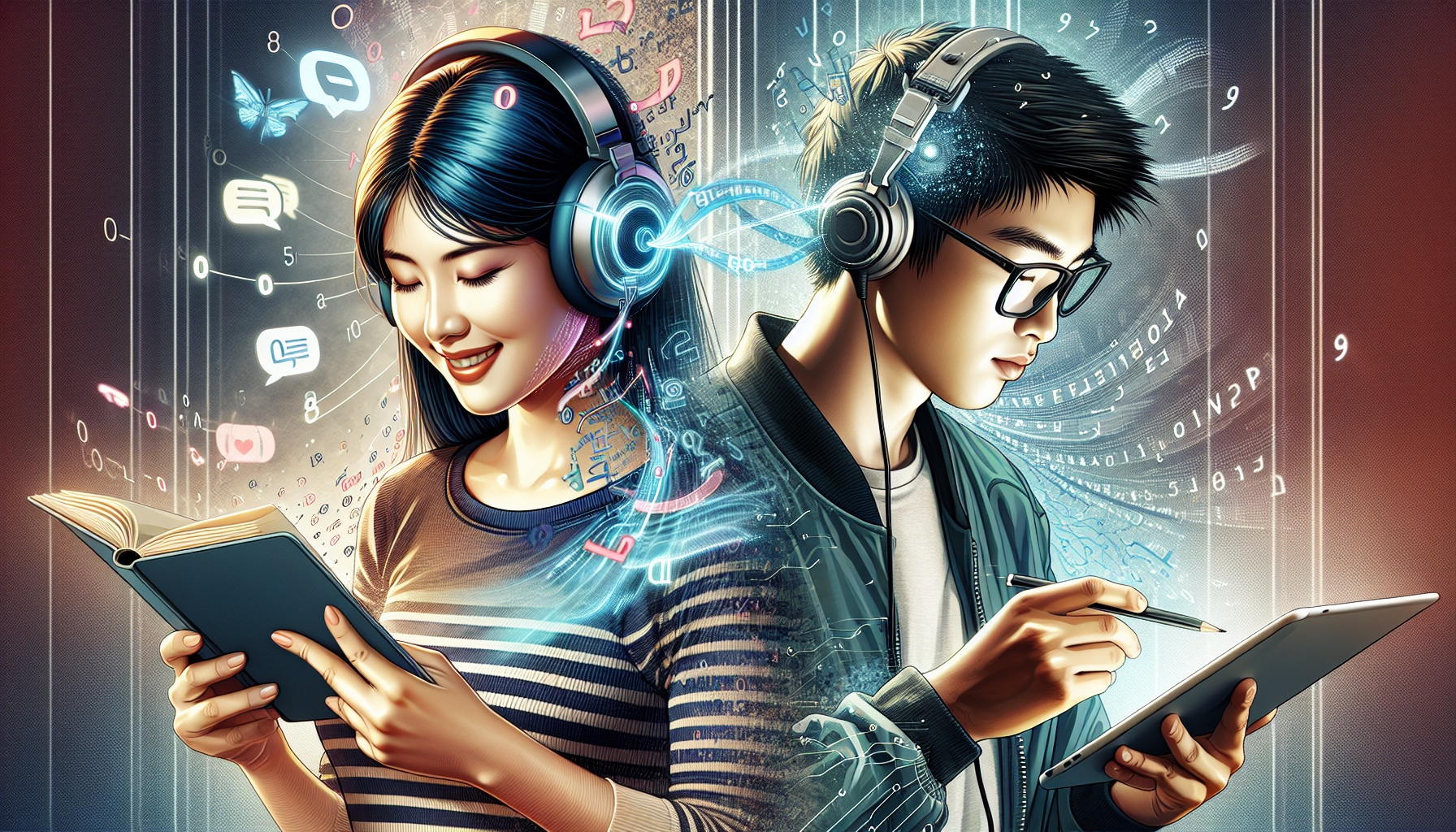Paul
Jul 2, 2024
Enhancing engagement is a key aspect of modern education. By offering personalized learning experiences and real-time feedback, AI voice tools in e-learning enhance engagement, making educational content more relatable and accessible through customizable and realistic AI voices. These tools support multiple languages and are cost-effective for educators. In this article, we explore how AI voice technology improves e-learning through key features, benefits, and practical applications.
Key Takeaways
- AI voice technology personalizes e-learning by adapting teaching styles to each student, streamlining course creation, and automating administrative tasks.
- Advanced AI voice generators enhance engagement with natural-sounding speech, realistic AI voices, multilingual capabilities, and customizable features, making e-learning content globally accessible and consistent.
- AI voice tools in e-learning offer practical applications such as virtual tutoring, interactive games, and professional development, showcasing successful implementations like chatbots at educational institutions.
The Role of AI Voice Technology in E-Learning

The way AI voice technology is transforming e-learning is through providing personalized, adaptive learning experiences. Imagine a classroom where the instructor can instantly adapt their teaching style to suit each student’s needs, providing real-time feedback and personalized learning paths. This level of personalization, made possible by AI, enhances student engagement and makes learning more effective.
Not only does AI enhance personalization, but it also greatly streamlines the process of creating a course. Educators can now generate targeted and effective content with ease, addressing specific learner needs and preferences. Additionally, AI handles administrative tasks like grading and scheduling, reducing errors and inefficiencies, and allowing educators to focus more on teaching.
AI-created voice-overs have a notable impact in making e-learning more accessible, as they make top-notch educational content available to a worldwide audience. This technology ensures that learners, regardless of their location or native language, can benefit from professional and engaging voice-overs, thus enhancing the overall e-learning experience. By utilizing realistic AI voices, the content becomes even more captivating and accessible, as these voices sound human-like and not robotic or monotonous.
Key Features of Advanced AI Voice Generators
Superior AI voice generators, including the most advanced AI voices, utilize advanced technologies such as Natural Language Processing (NLP) and Text-to-Speech (TTS) algorithms in the process of voice generation. NLP helps these tools understand and process input text, ensuring that the speech output is contextually accurate and natural-sounding. Modern TTS systems use both rule-based and data-driven approaches to convert written text into spoken words, achieving a high degree of naturalness.
Techniques like WaveNet, which model raw audio waveforms directly, further enhance the quality and expressiveness of AI-generated speech. These techniques are crucial for producing realistic AI voices that sound human-like rather than robotic or monotonous. Post-processing steps, such as smoothing transitions between phonemes and reducing artifacts, ensure that the final speech output is both realistic and pleasant to listen to.
Multilingual Capabilities of AI Voice Generators
A remarkable characteristic of sophisticated AI voice generators is their ability to support multiple languages. These tools can narrate content in multiple languages, making educational material more accessible to a global audience. Providers like Google Cloud Speech-to-Text support real-time speech recognition in over 120 languages and variants, ensuring that learners from diverse linguistic backgrounds can benefit from high-quality voice-overs.
Educators can choose from a vast library of natural-sounding AI voices with humanlike intonation in various languages and accents. This diversity not only broadens the reach of e-learning content but also ensures that it resonates well with learners, regardless of their native language.
Benefits of AI Voice Generators in E-Learning

AI voices that sound natural can notably boost learner engagement as they make the educational content more relatable and pleasant. Realistic AI voices can adjust pitch, speed, and volume, incorporating emotional tones and variations that convey different emotions. These human-like voices are essential for a better listening experience, ensuring the voices do not sound robotic or monotonous. This ability to simulate real-life conversations is particularly beneficial for language learning apps, where interactive dialogues with virtual characters can capture learners’ attention and keep them engaged.
Furthermore, AI-generated voices can narrate vocabulary lists and example sentences, helping learners associate words with correct pronunciation and usage. This not only aids in retention but also makes the learning process more interactive and engaging.
Customizing AI Generated Voices for E-Learning
The ability to customize is a major benefit of AI-created voices. Educators can take fine control over word pronunciations using the International Phonetic Alphabet (IPA) and save these in a pronunciations library for consistent use across various modules. Additionally, AI voice generators allow full control over sections of the script, including word-by-word adjustments for loudness and pace, ensuring that the audio matches the desired delivery style and maintains the educator’s own voice.
This level of customization extends to emphasizing specific words or phrases, thereby changing the meaning and feel of sentences. Such precise control ensures that the educational content is not only consistent but also tailored to meet specific learning objectives and preferences.
Improving Accessibility with AI Text to Speech Technology
AI text-to-speech technology is instrumental in enhancing accessibility for learners with different abilities. These tools can:
- Convert text to speech
- Make written content accessible for individuals with visual impairments
- Provide auditory access to content
- Enhance the learning experience for visually impaired students
Moreover, text-to-speech technology benefits learners with reading difficulties by:
- Transforming written content into spoken words
- Providing auditory access to help them better understand and retain information
- Making e-learning more inclusive and supportive of diverse learning needs.
Practical Applications of AI Voice Tools in E-Learning

AI voice tools have numerous and diverse practical uses in e-learning. For instance, virtual tutoring sessions using realistic AI voices can offer personalized lessons and feedback tailored to individual students’ proficiency levels. These realistic AI voices enhance the experience by sounding human-like and not robotic or monotonous. AI voice tools can also enhance listening comprehension exercises by exposing learners to diverse accents and speech patterns.
Interactive games powered by AI voice tools are another exciting application. These games can teach basic academic skills to young children in a fun and engaging way. Additionally, AI voice tools are used in professional development for teachers, providing training videos and voice-overs for instructional content.
Case Studies: Success Stories of AI Voice Integration in E-Learning
A number of educational institutions have accomplished the successful integration of AI voice technology into their e-learning platforms. For example, the University of Murcia implemented AI-enhanced chatbots that answered over 38,708 student inquiries with a 91% accuracy rate, significantly increasing student motivation. Similarly, Edwin, an AI-powered service, helped over 800,000 students in Latin America, Korea, and Japan improve their English through personalized learning.
Perhaps one of the most notable examples is the Georgia Institute of Technology’s AI-powered chatbot, Jill Watson. This chatbot responded to around 10,000 student inquiries each semester with a 97% accuracy rate, showcasing the potential of AI in providing efficient and effective student support.
Choosing the Best AI Voice Generator for Your E-Learning Needs
The selection of the most suitable AI voice generator for your e-learning requirements necessitates the consideration of various factors. Budget is a primary consideration, as different AI voice generators come with varying price points. Audience requirements also play a crucial role; for instance, some learners may benefit from specific voice styles or accents.
Selecting AI voice generators with realistic AI voices can significantly enhance the overall e-learning experience. Realistic AI voices ensure that the audio sounds human-like and not robotic or monotonous, which can improve learner engagement. Consideration of the advantages and disadvantages of each voice-over option is vital for making a well-informed decision. For example, Lalals.com excels in generating human-like cadence, producing outputs that sound like experienced voice actors. Evaluating these variables can help you select the best AI voice generator tailored to your specific e-learning needs.
Future Trends in AI Voice Technology for E-Learning

AI voice technology in e-learning holds a future filled with thrilling potentialities. Advanced AI voice generators utilize machine learning and neural networks to produce highly realistic and natural-sounding speech. These neural networks are trained on large datasets of human speech, enabling the generation of speech that closely mimics human intonation and rhythm. The importance of having access to high-quality and realistic AI voices cannot be overstated, as they provide a better listening experience by sounding human-like rather than robotic or monotonous.
Future AI technologies are expected to take personalization to new levels. AI-powered eLearning tools will become more common, offering adaptive learning experiences that predict individual learning paths and recommend content before the learner even recognizes the need. The development of AI tutors capable of providing real-time, personalized guidance and support to learners is also on the horizon.
Emotion AI, or affective computing, is set to play a significant role in eLearning. This technology can recognize and respond to learners’ emotional states, creating a more engaging and supportive learning environment.
Additionally, the integration of AI with Augmented Reality (AR) and Virtual Reality (VR) is expected to create immersive and interactive learning experiences, further enhancing the educational landscape.
Summary
In summary, AI voice technology is transforming e-learning by offering personalized, engaging, and accessible educational experiences. The integration of realistic AI voices is crucial in this transformation, as they provide high-quality, human-like sound that enhances the listening experience and avoids the pitfalls of robotic or monotonous speech. The key features of advanced AI voice generators, such as NLP, TTS algorithms, and multilingual capabilities, make them indispensable tools for modern education. The benefits of using AI voice generators include consistent quality, cost-effectiveness, and enhanced learner engagement.
As we look to the future, the potential of AI in e-learning is boundless. With advancements in machine learning, personalized learning, and Emotion AI, the educational landscape will continue to evolve, providing innovative solutions to meet the diverse needs of learners worldwide. Embrace these technologies and unlock the full potential of AI in your e-learning journey.
Frequently Asked Questions
All you need to know about Lalals.
What are the key benefits of using AI voice generators in e-learning?Using AI voice generators in e-learning provides consistent quality, cost-effectiveness, and improved engagement, making it a valuable tool for educational content creation. |
How do AI voice tools improve accessibility for differently-abled learners?AI voice tools improve accessibility for differently-abled learners by vocalizing text, making content accessible for visually impaired individuals. |
What are some practical applications of AI voice tools in e-learning?AI voice tools in e-learning can be utilized for virtual tutoring, interactive games, and professional development, providing an engaging and personalized learning experience. |
How can educators customize AI-generated voices for their e-learning content?Educators can customize AI-generated voices for e-learning content by controlling word pronunciations, script adjustments, and emphasis. This way, they can tailor the voices to best suit their content. |
What future trends can we expect in AI voice technology for e-learning?In the future, we can expect advancements in machine learning, personalized learning, and the integration of AI with AR and VR in e-learning. This will lead to more immersive and tailored educational experiences. |
Convert Your Voice with AI
Make your voice sound like those of famous arists.
Join Lalals and use our hyper-realistic voice converter now.